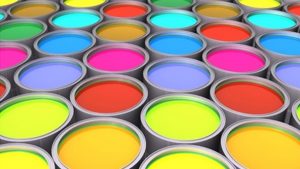
Ethyl acetate is used in a variety of coating formulations such as epoxies, urethanes, cellulosic, acrylics and vinyl. Applications for these coatings are numerous including wood furniture and fixtures, agricultural, construction and mining equipment, auto refinishing, and maintenance and marine uses. Ethyl acetate has applications as a solvent in inks for flexographic and rotogravure printing. It is used as an extraction solvent in the production of pharmaceuticals and food, and as a carrier solvent for herbicides. High purity product can be used as a viscosity reducer for resins used in photoresist formulations in the electronics industry.
Related Projects:- Chemicals (Organic, Inorganic, Industrial) Projects
- In the US, future growth is predicted at 2%/year to 2009. According to ICIS Chemical Business (ICB), US demand will increase from 88,500 tones in 2005 to 95,300 tones in 2009. Around 60% of ethyl acetate in the US is consumed as a solvent in a variety of coating formulations. These coatings are used for wood furniture and fixtures, agricultural, construction and mining equipment, containers and closures, auto refinishing, and maintenance and marine applications.
- Over the past 20 years, ethyl acetate coatings have been losing share to waterborne and high-solids coatings, powder and two-component coatings systems, due to environmental constraints on volatile organic compound emissions. This conversion has run its course, and the remaining market is growing again at a rate of about 2%/year.
- Solvent-based architectural coatings for both exterior and interior use consume 20% of the ethyl acetate used in coatings. This sector has been growing at approximately 6%/year. On the down side, OEM (original equipment manufacturer) solvent-based coatings has been declining slowly in the US. The OEM sector, however, is the largest and represents 58% of ethyl acetate’s coatings use demand. The remaining sector, specialty coatings, which includes marine coatings, has held steady.
- Ethyl acetate is used as a solvent in inks for flexographic and rotogravure printing, where its main function is to dissolve the resin, control the viscosity and modify the drying rate. As with industrial coatings, the decline in its use because of environmental constraints has largely been completed and future growth in the US is estimated to be a healthier 2.5%/year up to 2009.
Foretasted Market of Ethyl Acetate
The European market is reported to be balanced with ample supply and steady demand. However, future demand is expected to be flat and or even contract slightly as consumption by local paints and inks sectors shrinks as production moves eastwards.
Related Videos:- Chemicals (Organic, Inorganic, Industrial)
In the UK, INEOS has acquired BP’s ethyl acetate business including a 250,000 tones/year plant in Hull. Future consolidation is seen as possible in Europe as ethylene-based producers struggle to compete against more competitive ethanol-based production. Europe could also become more reliant on imports. Southeast Asia and China are expected to become the most important regions globally for ethyl acetate production and consumption. The Southeast Asian paints and coatings market is expected to grow at 5-6%/year.
Related Books:- Chemical Technology (Organic, Inorganic, Industrial), Fine Chemicals
A number of projects are planned in China which is expected to see growth up to 8%/year. Projects include a doubling of capacity to 400,000 tones/year by Jiangsu Sopo and a 100,000 tones/year plant being built by Yanakuna Cathay Chemical. Outside of China, Japan’s Daicel Industries is converting an acetic acid plant in Otake, Hiroshima to make ethyl acetate based on bioethanol. It will have a capacity of 50,000 tones/year with production expected to start in spring 2009.
Conclusion
“Ethyl Acetate – Manufacturing Plant, Detailed Project Report, Profile, Business Plan, Industry Trends, Market Research, Survey, Manufacturing Process, Machinery, Raw Materials, Feasibility Study, Investment Opportunities, Cost And Revenue, Plant Economics” The scope of the report includes assessing market potential, negotiating with collaborators, investment decision making, corporate diversification planning etc. in a very planned manner by formulating detailed manufacturing techniques and forecasting financial aspects by estimating the cost of raw material, formulating the cash flow statement, projecting the balance sheet etc.
Related Project:- Ethyl and Butyl Acetate
Noo_Art2021